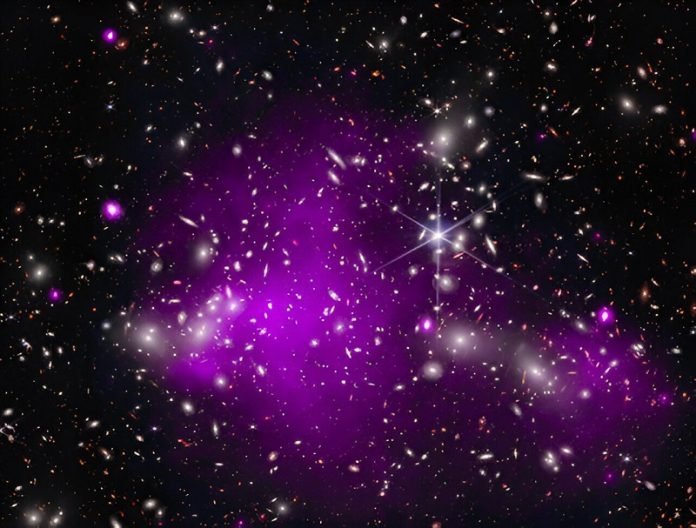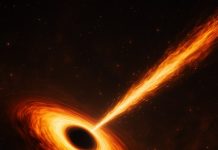
In the far reaches of space, NASA’s telescopes have spotted something extraordinary.
They’ve found a black hole so far away, it gives us a glimpse back in time to when the universe was just a toddler at 470 million years old.
It’s not just any black hole, though—it’s growing rapidly and already as heavy as the galaxy it lives in!
This incredible find helps scientists understand the mysterious beginnings of the universe’s first supermassive black holes, the cosmic juggernauts that lurk at the centers of galaxies, including our own Milky Way.
Using the powerful gaze of NASA’s Chandra X-ray Observatory and the sharp eyes of the James Webb Space Telescope, researchers have managed to find a black hole so distant that we see it as it was when the universe was only 3% of its current age. It’s like looking at a picture of a very young universe!
Akos Bogdan from the Center for Astrophysics | Harvard & Smithsonian is the lead detective in this cosmic investigation, and his findings are making waves. They’re getting ready to share all the details in the journal Nature Astronomy.
But here’s a sneak peek: they had a little help from a natural phenomenon called gravitational lensing. It’s like a cosmic magnifying glass, where the gravity of something big (like a cluster of galaxies) bends and boosts the light from things far behind it.
The black hole was hiding in a galaxy we’ve named UHZ1. It’s way beyond a galaxy cluster called Abell 2744, which is already 3.5 billion light-years away. But UHZ1 is even farther, sitting at an astonishing 13.2 billion light-years from us.
When Chandra took a two-week peek at this distant galaxy, it saw signs of hot, X-ray emitting gas. That’s the telltale sign of a growing supermassive black hole, munching away on material and getting bigger.
The story of how these black holes came to be is like a cosmic mystery. Were they born from massive gas clouds collapsing in on themselves, making them instantly big and heavy? Or did they grow from smaller seeds, the remnants of the very first stars?
According to Andy Goulding of Princeton University, who’s also part of this cosmic caper, if black holes start big, they get a head start in the race to grow. It’s like comparing the growth of a small plant to a seed—the plant will always turn into a tree faster.
Now, this team thinks they’ve found a heavyweight champion among black holes. It’s got a mass between 10 and 100 million suns, which is pretty unusual because it’s about the same weight as all the stars in its host galaxy.
That’s not what we see in our nearby universe, where black holes in galaxies are just a tiny fraction of the total weight of the stars.
This discovery fits with some brainy predictions made in 2017 by Priyamvada Natarajan of Yale University.
She envisioned an “Outsize Black Hole” that popped into existence from a giant gas cloud. It seems they might have just found the first one!
Natarajan says this could be the first time we’re seeing a supermassive black hole in its early growth phase, weighing the same as its galaxy’s stars before it gets outpaced.
The team is planning to use more data from Webb and other telescopes to paint a bigger picture of our early universe.
And let’s not forget the Hubble Space Telescope’s role in this—it was Hubble that showed us how light from distant galaxies can be supercharged by the gravity of stuff in front of them. That’s what encouraged the team to use Webb and Chandra to take a closer look.
So, the paper is all set to appear in Nature Astronomy, and you can already take a peek at the preprint. This space saga includes stars like Orsolya Kovacs, Grant Tremblay, and many more.
Stay tuned, because the space detectives are just getting started, and there’s a whole universe out there waiting to reveal its secrets!
Follow us on Twitter for more articles about this topic.
Source: KSR.



